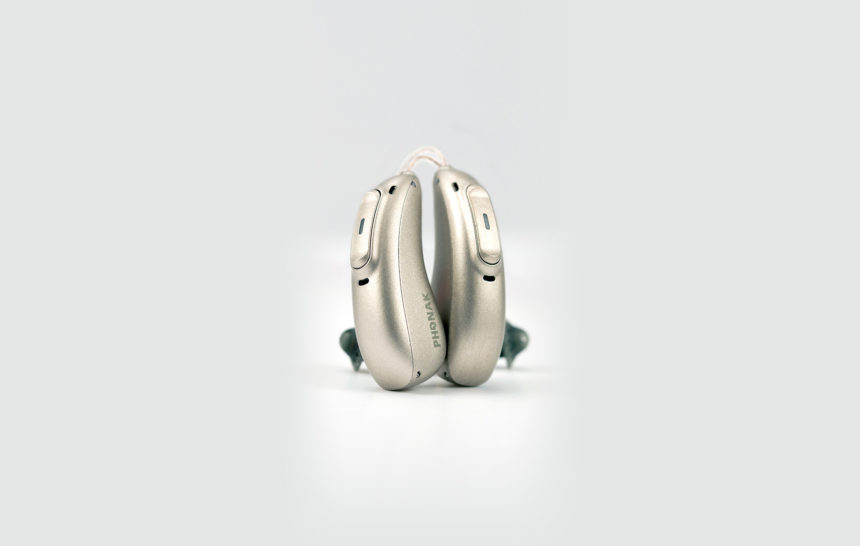Do you require one hearing aid or two? If your audiologist has recommended two hearing aids because you have hearing loss in both ears this is not surprising. Plenty of research indicates that two hearing aids are better than one when you have hearing loss in both ears. Let me share with you why two hearing aids are better than one.
Better speech understanding
Better speech understanding
Better speech understanding
It goes without saying that we were born with two ears for a reason. By having two hearing aids, speech signals are amplified that much more, therefore, selective listening can be more easily achieved. Wearing two hearing aids can add an additional 10 decibels of gain of sound enhancement to improve sound quality. This increase in loudness is known as “binaural summation”.
Better understanding in group situations or background noise
Better understanding in group situations or background noise
Better understanding in group situations or background noise
Wearing two hearing aids helps improve speech understanding in difficult listening situations. Our brain is able to decipher what information is important in a group situation and focus on that speech source, while ignoring the background noise and distant conversation that are competing for our attention. Research conducted by Walden 2005, indicate that individuals who wear two hearing aids perform better on speech recognition tasks in background noise than individuals who wore one hearing aid.
You can figure out where sounds are coming from
You can figure out where sounds are coming from
You can figure out where sounds are coming from
Localization is our ability to determine sound direction and where they are derived. In group situations, localization allows you to hear which direction someone is speaking to you. This is also important for safety issues. For example, if you are walking across a street, two hearing aids give you the ability to determine where the direction of traffic. Whereas, a person wearing only one hearing aid may take longer to realize this and will use more listening effort to do so. This can be tiring. Research from Kobler 2002, demonstrate there are major advantages to wearing two hearing aids given situations with a lot of background noise. Sound awareness is achieved with little effort; therefore, conversations are found to be more fluent and understandable.
Hearing requires less effort, is not as tiring, and is more pleasant
Hearing requires less effort, is not as tiring, and is more pleasant
Hearing requires less effort, is not as tiring, and is more pleasant
With two hearing aids people do not have to strain to hear with the better ear. People fit with two hearing aids report less effort for listening and participating in conversation making interactions more enjoyable.
Better sound quality
Better sound quality
Better sound quality
Having two hearing aids provides better sound quality because you have both ears working in stereo. Sounds are more easily distinguishable. Wearing two hearing provides better speech understanding compared to wearing one hearing aid. Research from Mencher 2006, indicate that people who wore two hearing aids had a 5% increase in speech perception compared to people who wore one hearing aid. Bilateral amplification provided clarity, fullness, loudness, and nearness, whereas, one hearing aid did not.
Keep your ears active
Keep your ears active
Keep your ears active
Wearing two hearing aids keep both ears active. The hearing nerve is like a muscle, it needs to be worked out. When an individual with hearing loss goes a few years without wearing a hearing aid on the impaired ear, the ear can begin to deteriorate. This is known as “auditory deprivation”. Research from Hurley 1999 demonstrate that if an ear is left unaided, the ability to discriminate speech may be gradually lost.
Hear at a distance
Hear at a distance
Hear at a distance
People who wear two hearing aids are able to hear better at a distance, compared to people who only wear one hearing aid.
Keep in mind that audiologists will provide you with a trial period to try the hearing aids. If you have any questions, please contact HEARING HEALTHCARE of East Gwillimbury!
Keep in mind that audiologists will provide you with a trial period to try the hearing aids. If you have any questions, please contact HEARING HEALTHCARE of East Gwillimbury!
Call (905) 478-2929
Call (905) 478-2929
References:
References:
Hurley, R. M. 1999. Onset of Auditory Deprivation. Journal of the American Academy of Audiology,
Hurley, R. M. 1999. Onset of Auditory Deprivation. Journal of the American Academy of Audiology,
Vol. 10, 529534.
Vol. 10, 529534.
Kobler, S. Rosenhall U. 2002. Horizontal localization and speech intelligibility with bilateral and unilateral
Kobler, S. Rosenhall U. 2002. Horizontal localization and speech intelligibility with bilateral and unilateral
hearing and amplification. International Journal of Audiology. Vol. 41, 395-400.
hearing and amplification. International Journal of Audiology. Vol. 41, 395-400.
Mencher G.T., Davis, A. 2006. Bilateral or unilateral amplification: Is there a difference? A brief tutorial.
Mencher G.T., Davis, A. 2006. Bilateral or unilateral amplification: Is there a difference? A brief tutorial.
International Journal of Audiology. Vol. 45, 3-11.
International Journal of Audiology. Vol. 45, 3-11.
Walden T.C., Walden B.E. 2005 Unilateral versus Bilateral amplification for adults with impaired hearing.
Walden T.C., Walden B.E. 2005 Unilateral versus Bilateral amplification for adults with impaired hearing.
Journal of American Academy of Audiology. Vol.16, 8.
Journal of American Academy of Audiology. Vol.16, 8.

